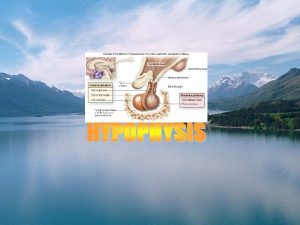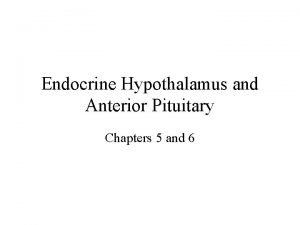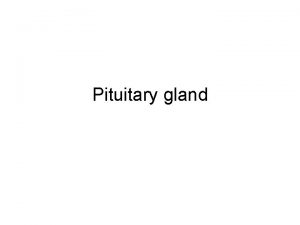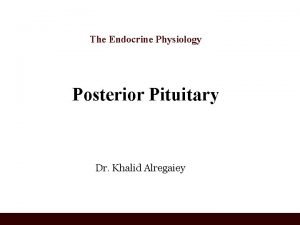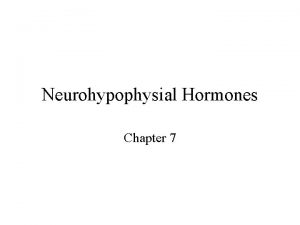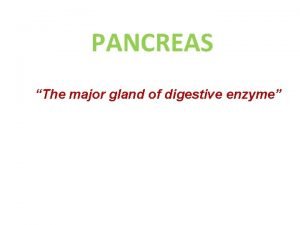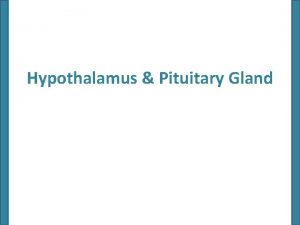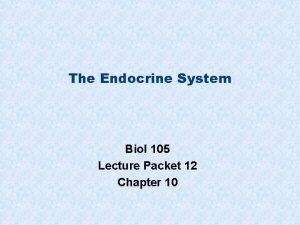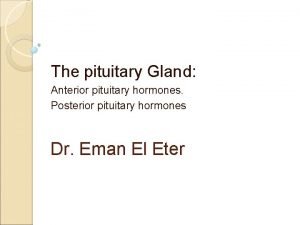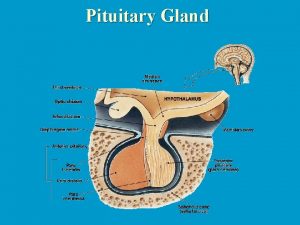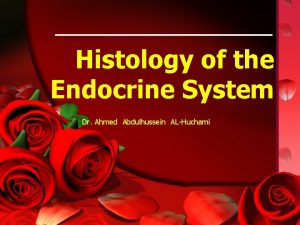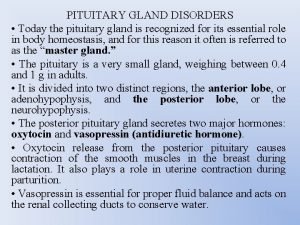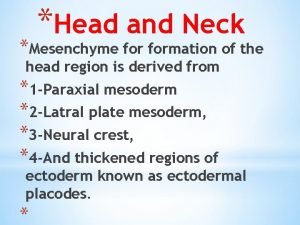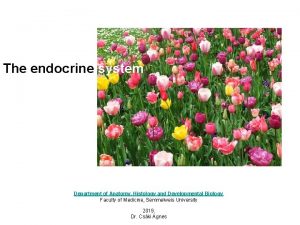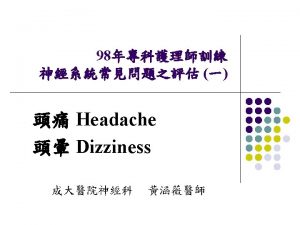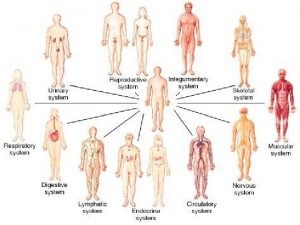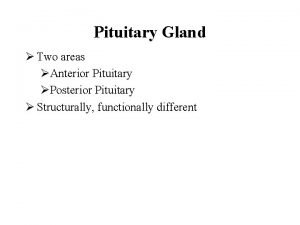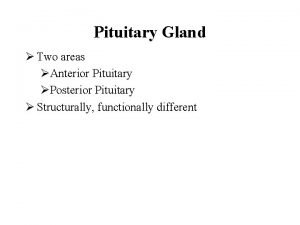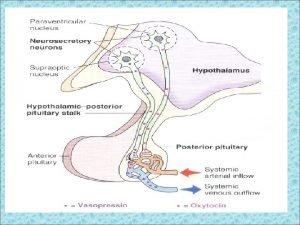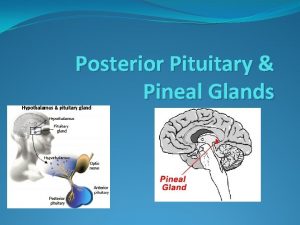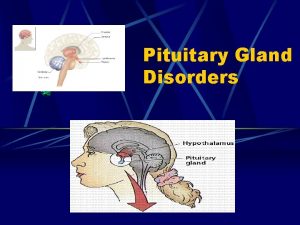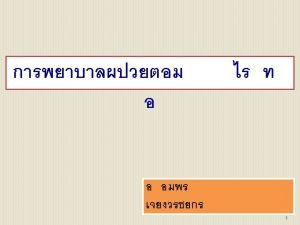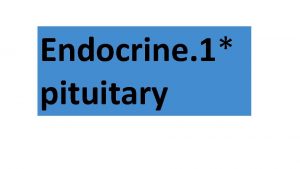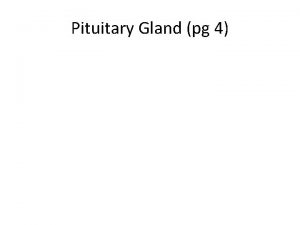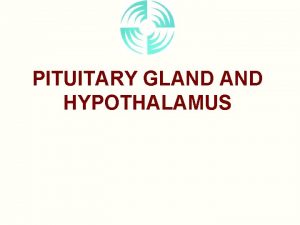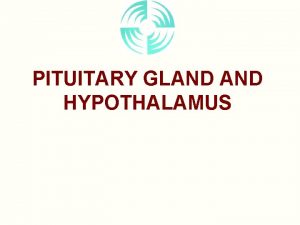Physiology of the Posterior Pituitary The posterior pituitary
























- Slides: 24


Physiology of the Posterior Pituitary • The posterior pituitary gland secretes two hormones which are: • oxytocin , • increase uterine contractions during parturition • Contraction of mammary glands to secret milk • and vasopressin or arginine vasopressin (AVP) (or Antidiuretic Hormone ‘ADH’) • contract vascular smooth muscle and thus raise blood pressure • promote reabsorption of water by renal tubules 2

Posterior Pituitary and Hypothalamic Hormones • Oxytocin and ADH • Each composed of nine amino acids • Almost identical – differ in two amino acids © 2013 Pearson Education, Inc.

Physiology of the Posterior Pituitary • Oxytocin and ADH are stored in and secreted by the posterior pituitary gland, but are synthesized by the hypothalamus 4

The Pituitary Gland: • Posterior pituitary • Vasopressin • Oxytocin Figure 7 -12 (1 of 4)

The Pituitary Gland: Figure 7 -12 (2 of 4)

Figure 7 -12 (3 of 4)

The Pituitary Gland: Figure 7 -12 (4 of 4)

The Pituitary Gland: Figure 7 -12

Maintaining Water Balance • • As in lose water, the concentration of dissolved materials in our blood rises. The hypothalamus signals the pituitary gland to release a hormone— antidiuretic hormone (ADH).

Maintaining Water Balance • ADH is carried by the blood to the kidneys, where it slows the removal of water from the blood. • Later, we experience a sensation of thirst.

• When we take a drink, most of that water is quickly absorbed into the blood.

Maintaining Water Balance When the water content of the blood rises, the pituitary releases less ADH. Less ADH causes the kidneys to remove water from the blood.

The blood is then restored to its proper concentration.

Maintaining Water Balance Less water = more ADH = kidneys conserve water. More water = less ADH = kidneys remove water


14 -29







 Posterior pituitary
Posterior pituitary Dwrfism
Dwrfism Difference between anterior and posterior pituitary
Difference between anterior and posterior pituitary Pituitary gland embryonic origin
Pituitary gland embryonic origin Hypophysis
Hypophysis Difference between anterior and posterior pituitary
Difference between anterior and posterior pituitary Posterior abdominal wall nerves
Posterior abdominal wall nerves Pineal gland pituitary gland
Pineal gland pituitary gland Hypersecretion of prolactin
Hypersecretion of prolactin Hypothalamus hormones
Hypothalamus hormones Hypophyseal portal system
Hypophyseal portal system Pituitary dwarfism
Pituitary dwarfism Galactorrehea
Galactorrehea Prolactin hormones
Prolactin hormones Endocrine weight loss
Endocrine weight loss Structure of hypothalamus and pituitary gland
Structure of hypothalamus and pituitary gland Histology of pituitary gland
Histology of pituitary gland Pituitary gland and pineal gland spiritual
Pituitary gland and pineal gland spiritual Pituitary gland disorders
Pituitary gland disorders Tongue development
Tongue development Endocrine histology
Endocrine histology Dix hallpike
Dix hallpike Organ system
Organ system Nerve supply to pituitary gland
Nerve supply to pituitary gland Parathyroid gland chief cell
Parathyroid gland chief cell

